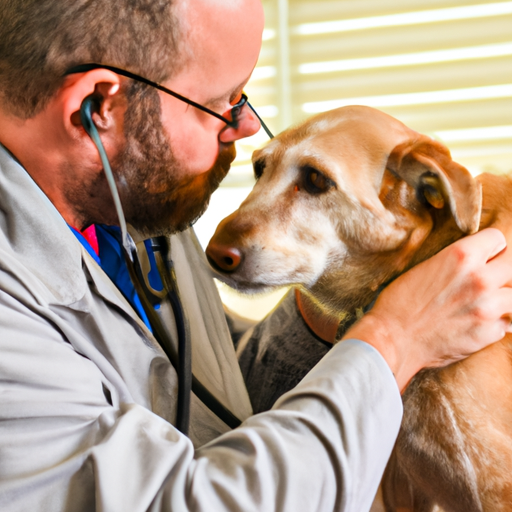As a dog owner, your pet’s health is of utmost importance. One vital indicator of your dog’s wellbeing is their pulse rate. It’s not only useful in emergency situations, but it also helps you monitor your pet’s overall health. This article will guide you on where and how to check your dog’s pulse.
- Table of Contents
- Understanding the Importance of a Dog’s Pulse
- Where to Find a Dog’s Pulse
- How to Check a Dog’s Pulse Rate
- Normal Dog Pulse Rate
- What an Abnormal Pulse Rate Could Mean
-
Frequently Asked Questions
-
Key Takeaways
- Knowing how to check your dog’s pulse is an essential skill for any dog owner.
- The femoral artery, located in the inner thigh, is the most common place to find a dog’s pulse.
- The normal pulse rate for dogs varies based on age and size, but typically ranges between 60-140 beats per minute.
- Changes in your dog’s pulse rate could indicate health problems and should be addressed with a vet.
Understanding the Importance of a Dog’s Pulse
As with humans, a dog’s pulse is the heartbeat felt through the walls of an artery. It’s a vital sign that indicates how well the heart is functioning and delivering oxygenated blood throughout the body. By checking your dog’s pulse, you can detect early signs of health issues such as heart disease, shock, or dehydration.
You can find more information on the importance of a dog’s vital signs here.
Where to Find a Dog’s Pulse
The pulse of a dog is typically taken at the femoral artery, which is located in the inner thigh. To find it:
- Place your dog on their side or sit them in your lap if they are small.
- Feel the inside of the rear leg at the point where it joins the body.
- Slide your fingers forward to the slight depression in the middle of the thigh.
You can also find a pulse on a dog’s foreleg or the pad of the foot. However, these are trickier to locate and are generally used by veterinarians.
Here’s a helpful guide from One Top Dog on dog health and wellness that provides more in-depth information.
How to Check a Dog’s Pulse Rate
Once you’ve found the pulse, use the tips of your fingers (not your thumb, as it has its own pulse) to apply light pressure for a few seconds.
- Count the number of beats in 15 seconds, then multiply by 4 to get the beats per minute.
- Take note of the rhythm and strength of the pulse. It should be regular and strong, not weak or sporadic.
For a visual guide, check out this video tutorial on checking your dog’s pulse.
Normal Dog Pulse Rate
The normal pulse rate varies based on a dog’s age, breed, and size. In general, a normal resting heart rate for dogs ranges from 60 to 140 beats per minute. Puppies and smaller breeds often have a faster heart rate, while large breed dogs typically have a slower rate. It’s a good idea to check your dog’s pulse regularly so you know their normal rate.
What an Abnormal Pulse Rate Could Mean
A pulse rate that’s too fast, too slow, irregular, or weak could indicate several health issues. These could be heart disease, dehydration, fever, anemia, or shock. If you notice any abnormalities in your dog’s pulse, it’s important to consult with your vet immediately.
For more on understanding and responding to health issues in dogs, One Top Dog has a great resource.
Frequently Asked Questions
1. How often should I check my dog’s pulse?
Regular checks are recommended, perhaps once a month. However, if your dog has a known health condition, you should check it more frequently.
2. What should I do if my dog’s pulse is abnormal?
If you notice any abnormalities, it’s important to consult with a vet immediately.
3. Can I check my dog’s pulse when they’re active?
Ideally, you should check your dog’s pulse when they’re at rest, as physical activity can elevate the heart rate.
Understanding your dog’s pulse is a valuable tool in monitoring their health. Remember, your observations should complement regular vet checkups, not replace them. For more insights on dog health, visit One Top Dog.



